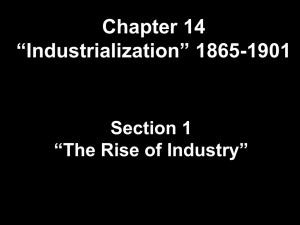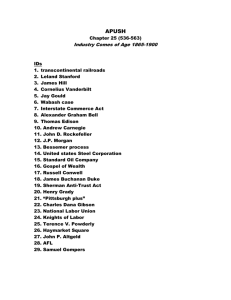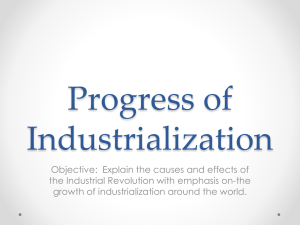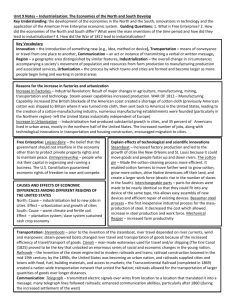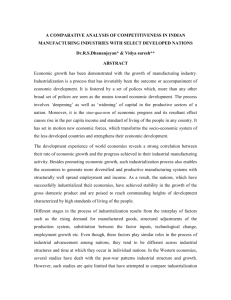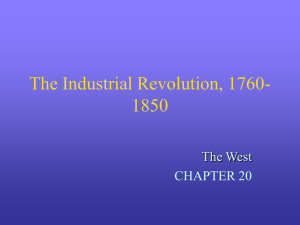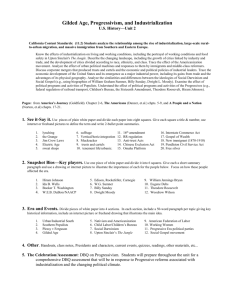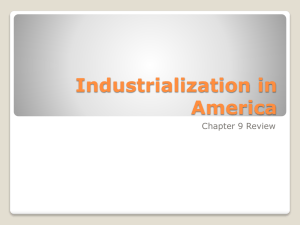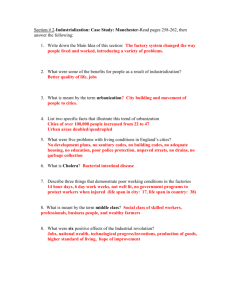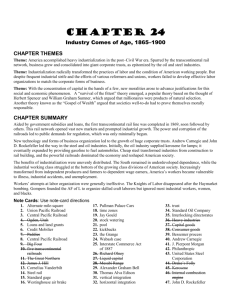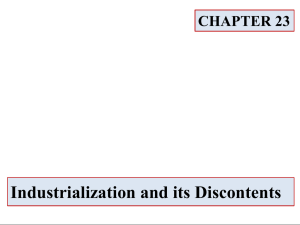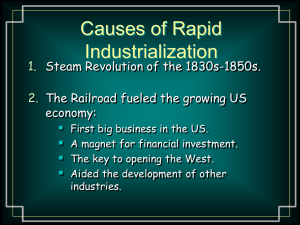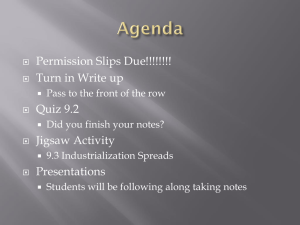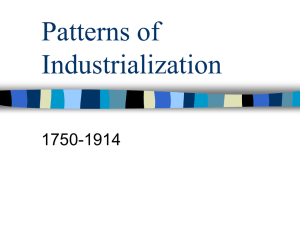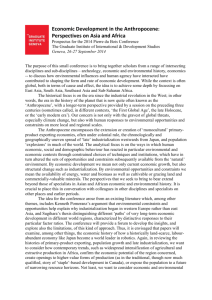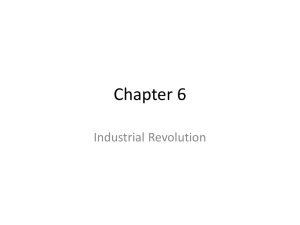24 Industry Comes of Age
advertisement
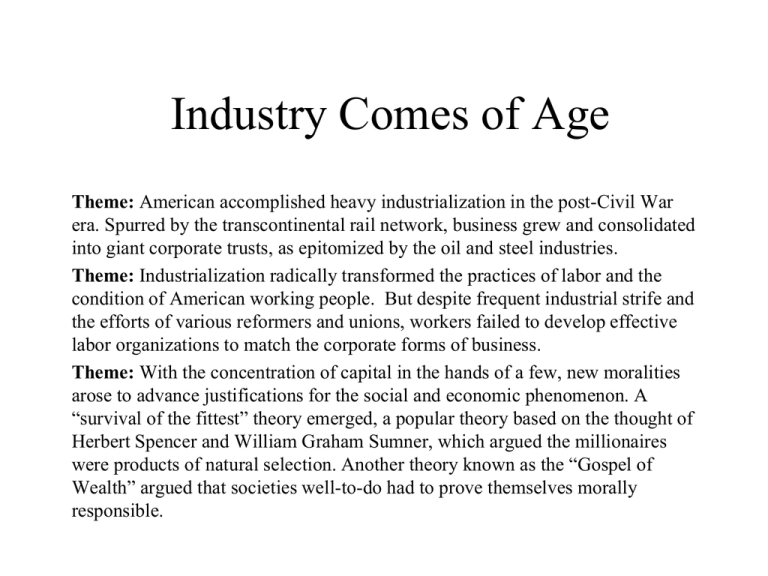
Industry Comes of Age Theme: American accomplished heavy industrialization in the post-Civil War era. Spurred by the transcontinental rail network, business grew and consolidated into giant corporate trusts, as epitomized by the oil and steel industries. Theme: Industrialization radically transformed the practices of labor and the condition of American working people. But despite frequent industrial strife and the efforts of various reformers and unions, workers failed to develop effective labor organizations to match the corporate forms of business. Theme: With the concentration of capital in the hands of a few, new moralities arose to advance justifications for the social and economic phenomenon. A “survival of the fittest” theory emerged, a popular theory based on the thought of Herbert Spencer and William Graham Sumner, which argued the millionaires were products of natural selection. Another theory known as the “Gospel of Wealth” argued that societies well-to-do had to prove themselves morally responsible. I. Railroads A. Railway Pacific Act, 1869 1. 2. B. Railroad Expansion 1. 2. 3. C. Partial govt. subsidy for additional transcontinental RR’s with only land (no cash) Vanderbilt and Steel One exception: Panic of 1873 in which RR overspeculation caused depression brought hard times for all Revolution and Challenges 1. 2. 3. Ceremony at Promontory Point, Utah Generous govt. subsidy with cash payments and land grants Paddies (Irish on Union Pacific), Coolies (Chinese on Central Pacific), Big 4 (investors of Central Pacific) are notable people with the Transcontinental RR. Mr. T’s Impact of RR’s Memory Device: Manufacturing, Mining, Moo (agriculture), Millionaires and Municipals Robber Barons used illegal techniques of “stockwatering,” rebates, and “pools” to increase profits. Wabash Case said that states could NOT regulate interstate commerce. a. Reformers in Congress agreed to do something about the courts decision from the Wabash case and created the ICC to regulate interstate commerce, 1887 You can identify the four transcontinental railroads by their titles, the fifth is the Atchinson/ Topeka/Santa Fe RR. II. Industrialization A. Factors of Postwar Industrialization 1. 2. 3. 4. B. Increase in available capital from the federal govt and investors Exploitation of natural resources especially in Mesabi Range Unskilled labor used to make steel was readily available, thanks immigration American ingenuity motivated by huge profits namely Edison and Bell Trust Titans Emerge 1. 2. 3. C. A. Carnegie used vertical integration to control all aspects of industry. J. Rockefeller controlled competitors by controlling their stock called “Trusts” J.P. Morgan controlled competition through control of Board of Directors Reactions to Industrialization 1. Moral responsible to “Gospel of Wealth” was the attitude of JP Morgan a. Gave away $350 of fortune 2. 3. Survival of the fittest was the attitude of Spencer & Sumner-rich don’t need to give anything away to better society, they won the economic battle and were should enjoy the benefits Politicians fostered a plutocracy that frustrated the consumers to action a. 4. Congress hammered through the Sherman Anti-trust Act, 1890 which forbade combinations of trade but ended up curbing labor. In South, industrialization was limited with the exception of textile mills. III. Labor: “The Sweat of Industrialization” A. Employer tools 1. 2. 3. B. Unlimited capital due to ability to sell stocks “scab” workers, “lockouts,” courts that issued injunctions, federal troops, “iron-clad oaths” or “yellow-dog contracts,” “blacklists,” and company towns that charged high food prices and rent. Middle class grew deaf to labor strife and viewed labor as radical revolutionaries when they simply wanted a little more return for their labors. Labor Groups 1. 2. 3. National Labor Union fought social reform until 1873 and Great RR Strike, 1877 Knights of Labor created one big union under T. Powderly but Haymarket damaged labor’s reputation because they were viewed as anarchists and trouble-makers (when in reality the Knights of Labor preferred socialism to capitalism) AFofL was a nonpolitical federation under S. Gompers in which pushed “closed shop” but labor disputes continued with Homestead Strike and Pullman Strike of 1890’s. Putting Things in Order (Put the following events in correct order by numbering them 1 to 5) 1. _____ J.P. Morgan buys out Andrew Carnegie to form the first billion-dollar U.S. corporation 2. _____ The first federal law regulating railroads is passed 3. _____ The killing of policemen during a labor demonstration results in the execution of radical anarchists and the decline of the Knights of Labor 4. _____ A teacher of the deaf invents a machine that greatly eases communication across distance 5. _____ A golden spike is driven, fulfilling the dream of linking the nation by rail Answers 1. 2. 3. 4. 5. 5 4 3 2 1



